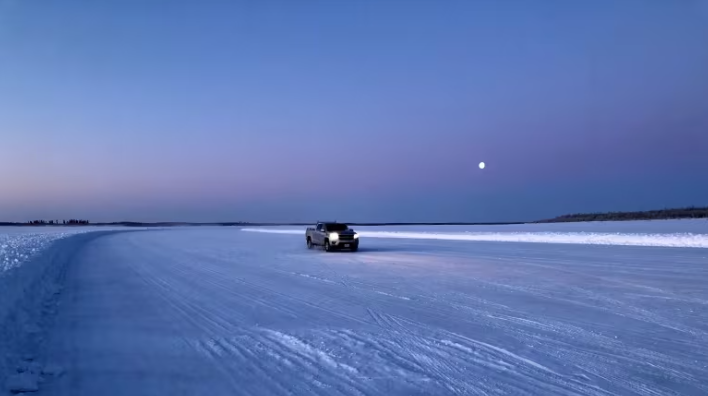Climate change threatens winter roads connecting northern Ontario’s remote communities

Warmth, temperature volatility cutting First Nations off from provincial road network
For many northern Ontario First Nations, apart from air travel, the only connection to the rest of the province is seasonal winter roads built each year on the frozen rivers, lakes, muskeg and earth. As climate change continues to narrow the window during which winter roads are useable, Nishnawbe Aski Nation (NAN) gathered in Thunder Bay to strategize how to keep its communities connected in a rapidly thawing north.
In a summit overview handout, NAN said that climate change has “reduced the length of winter road season from an average of 77 days, to as few as 28 days or less in some areas.”
For several weeks each winter, tractor-trailers make their way into remote, fly-in First Nations via a series of crossings over frozen lakes and streams, delivering fuel, building supplies and other large loads that would be difficult and expensive to transport by air.
As warmer temperatures put the long-term viability of the winter road network at risk, some said it’s time to start looking at more permanent infrastructure.
Roy Moonias, the project co-ordinator for Neskantaga First Nation, said anyone coming or going from Neskantaga has to cross three kilometres over a lake.
“That’s always a challenge for us, crossing that lake, because we lost already one community member — went through the ice,” said Moonias.
Neskantaga has been asking the government to help them get a bridge across that segment, said Moonias.
The Ontario Ministry of Energy, Northern Development and Mines sent a staff member to discuss $5 million in winter road funding the province will provide. But Moonias said he doubted that the funding would cover a single bridge, let alone make a dent in the other winter roads connecting over 30 First Nations.
“That’s peanuts,” said Moonias. “That’s not even a crossing.”
Fly-in First Nation communities across northern Ontario rely on the winter road network to truck in items that would be costly or nearly impossible to transport by plane. Some communities race to transport an entire year’s supply of diesel on the roads before they thaw out in the spring.
Warm weather in recent years has led to shorter seasons and slushy conditions, and prompted calls for permanent infrastructure to make transport safer.

The winter road season will continue to shorten as climate change continues to impact weather, said Merrina Zhang, a senior research engineer at the National Research Council. Northern Canada is being more acutely impacted than many other parts of the world, said Zhang, and will continue to see greater fluctuations in temperature in the coming years.
The winter roads are impacted not just by warmth, but also by the volatility of the weather, said Zhang.
“This is a mode of transportation that needs persistent cold and needs predictable cold,” Zhang said. “Weather’s becoming more unpredictable. It’s warming up earlier and freezing a little later.”
While winter roads may not be a viable option forever, Zhang said more data can help experts develop better ways to protect them.
Her “data wish list” includes ground penetrating radar data, ice thickness data and route information.
“Anything that can help us understand the details of how winter roads are built, what makes each road unique compared to other ones — that can help us advance our understanding of how it’s changing, how it is now, how it might change in the future.”
Related News
Canadians required to register with U.S. government if in country at least 30 days
Many Canadians travelling to the United States will now have to newly register with theRead more
Duty-free shops struggle to make ends meet as Canadians steer clear of U.S.
If business doesn’t pick up soon at his duty-shop, Éric Lapointe says he’s going toRead more
